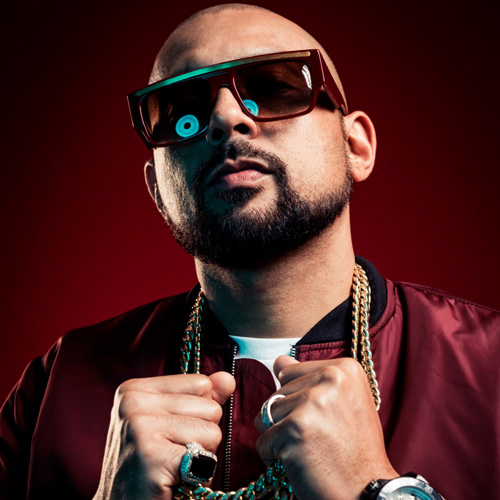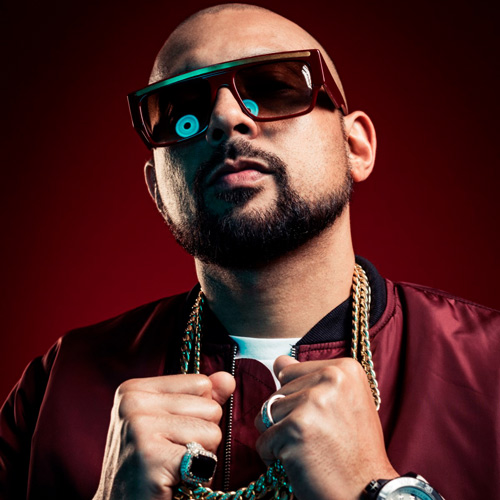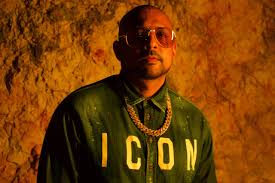Sean Paul’s rise in the music industry is not just a tale of personal success but also a defining chapter in the globalization of Jamaican culture. Emerging from Kingston, a city pulsing with musical innovation, he transformed the raw vibrancy of dancehall into a sound that resonated far beyond the Caribbean. What makes Sean Paul stand out is his ability to stay true to his roots while appealing to diverse audiences across continents. His deep, gravelly voice, paired with his mastery of rhythm and flow, allowed him to dominate both dancehall charts and mainstream radio. Over the years, he has cultivated a reputation as a versatile hitmaker, collaborating with artists across genres—from hip-hop to pop, EDM to reggae—creating anthems that seamlessly fuse Jamaican authenticity with international accessibility.
With a net worth estimated at $25 million, his achievements extend beyond financial gains. Sean Paul has become a cultural pioneer, breaking down barriers for dancehall by introducing its energy and dialect to millions who had never encountered it before. His Grammy win and multiple Billboard chart-toppers are evidence of his universal appeal, but his true legacy lies in the way he helped reshape global music, ensuring dancehall’s influence is woven into the fabric of modern pop. From his days as a competitive swimmer in Kingston to headlining sold-out arenas worldwide, Sean Paul’s journey reflects unwavering ambition, strategic collaborations, and a sharp understanding of the evolving music landscape. His career serves not only as a model for aspiring artists but also as a reminder of how one artist’s dedication to cultural authenticity can create a lasting global impact.

Early Life: From National Athlete to Budding Music Star
Sean Paul Ryan Francis Henriques was born on January 9, 1973, in Kingston, Jamaica, into a household where discipline, faith, and athletic excellence were guiding principles. His family background is a vivid blend of Portuguese, Chinese, and Afro-Jamaican ancestry, reflecting the diverse cultural mosaic of Jamaica itself. Raised in a devout Catholic home, Sean Paul’s upbringing placed a strong emphasis on education, respect for tradition, and competitive achievement. While most would later know him for his commanding presence on stage, his early ambitions were firmly rooted in athletics.
Encouraged by a lineage of family members who proudly represented Jamaica in international competitions, Sean Paul developed into a skilled athlete specializing in water sports. He excelled particularly in water polo and swimming, disciplines that demanded resilience, teamwork, and relentless dedication. His talent led him to represent Jamaica’s national water polo team, a prestigious role he held until the age of 21. This chapter of his life instilled in him a sense of perseverance and work ethic that would later fuel his music career.
Although he initially enrolled at the College of Arts, Science, and Technology (now the University of Technology, Jamaica) to study commerce with hopes of building a secure professional path, Kingston’s ever-present music scene kept tugging at his imagination. Growing up surrounded by the raw, electrifying sounds of local dancehalls, Sean Paul felt an undeniable connection to rhythm and lyrical expression. Gradually, his focus began to shift. The same drive that once propelled him through the waters of competitive sport began to channel into crafting rhymes, experimenting with beats, and honing his distinctive voice.
This pivotal transition marked the moment when Sean Paul exchanged the swimming pool for the recording studio. What had started as a personal passion soon grew into a professional calling. The young athlete from Kingston was on the brink of reinventing himself, setting the stage for a journey that would take him from local underground shows to international stardom, and ultimately reshape the global perception of dancehall music.
Career: Building a Dancehall Empire
Sean Paul’s entrance into music in the mid-1990s was not the product of a carefully scripted plan but rather a natural evolution of his creative curiosity. Drawn to Kingston’s vibrant recording culture, he began spending long hours at the studio of producer Jeremy Harding, initially as an observer, eager to absorb the intricate mechanics of beat-making and vocal production. It wasn’t long before his rhythmic instincts and commanding vocal style earned him studio time of his own. His first recordings, including the track “Baby Girl,” hinted at the potential that would later redefine dancehall. The real breakthrough came with his collaboration with Harding on “Infiltrate,” a single that quickly gained traction on Jamaican radio and announced Sean Paul as a rising talent in the island’s competitive music scene.
His debut album, Stage One (2000), introduced the world to his unapologetically authentic dancehall delivery. While the project resonated strongly in Jamaica and among reggae enthusiasts abroad, its international reception was modest, giving only a glimpse of what was to come. The real turning point arrived two years later with the release of Dutty Rock (2002). This was not just an album but a cultural milestone. Armed with irresistible singles like “Gimme the Light” and the global anthem “Get Busy,” Sean Paul catapulted onto the international stage. The latter track became his first Billboard Hot 100 No. 1, firmly establishing him as the face of dancehall’s crossover movement. The momentum was amplified when he appeared on Beyoncé’s “Baby Boy” (2003), a collaboration that dominated radio airplay worldwide and further secured his place as an international superstar.
Dutty Rock went on to sell millions of copies globally and earned Sean Paul the Grammy Award for Best Reggae Album in 2004. More importantly, it marked the birth of what critics called “dancehall fusion”—a genre hybrid that blended the pulse of Jamaican rhythms with mainstream pop accessibility. In doing so, Sean Paul didn’t just score chart-toppers; he shifted the soundscape of global pop music.
He capitalized on this wave of success with his third studio album, The Trinity (2005), which delivered enduring hits like “We Be Burnin’” and the iconic party anthem “Temperature.” Both singles kept him at the forefront of the global charts, with “Temperature” becoming another Billboard Hot 100 No. 1 and a staple of dance floors worldwide. The album’s impact was recognized with major accolades, including an American Music Award, cementing Sean Paul’s reputation as one of the most bankable names in international music.
Over the following decade, Sean Paul continued to prove his staying power with a steady output of successful projects. Albums like Imperial Blaze (2009), Tomahawk Technique (2012), and Full Frequency (2014) reinforced his global appeal and earned repeated Grammy nominations for Best Reggae Album. While trends in music shifted, his adaptability and relentless commitment to evolving his sound allowed him to remain relevant.
One of the keys to Sean Paul’s enduring influence has been his instinctive embrace of collaboration. Far from limiting himself to the reggae and dancehall space, he has worked with a vast spectrum of international stars. From Enrique Iglesias’ “Bailando” to Major Lazer’s genre-bending productions, and from Sia’s global hit “Cheap Thrills” to Dua Lipa’s “No Lie,” Sean Paul has consistently reinvented himself through partnerships. Each collaboration not only introduced him to new fanbases but also ensured his sound remained fresh and forward-looking.
After a period of working independently, his 2016 return to the mainstream spotlight under a new management team and a record deal with Island Records marked yet another resurgence in his career. This phase reintroduced him to younger audiences and demonstrated his sharp business acumen, showing that Sean Paul was not merely a product of the early 2000s but a versatile, adaptive, and enduring powerhouse in global music.
Today, with over 25 years in the industry, Sean Paul’s catalog spans chart-topping singles, multi-platinum albums, and genre-defining collaborations. His journey from Kingston studios to global arenas is not only a personal triumph but also a victory for dancehall itself, proving that Jamaica’s vibrant sound can command the world stage and remain timeless.

Multiple Streams of Income
Sean Paul’s estimated $25 million net worth is the product of more than two decades of global success, carefully crafted deals, and a deep understanding of how to turn music into a sustainable financial engine. His fortune is built on multiple interconnected income streams that go far beyond just record sales. At the core of his wealth are music sales and streaming royalties, where timeless albums such as Dutty Rock (2002) and The Trinity (2005) continue to pull in impressive revenue even years after their release. These albums, which produced global anthems like Get Busy and Temperature, still attract millions of streams each month across platforms like Spotify, YouTube, and Apple Music. Thanks to the digital era, Sean Paul has managed to keep his music relevant to younger audiences, allowing him to capitalize on both new listeners discovering his classics and longtime fans keeping his catalog alive.
Another major source of income comes from his tours and live performances, where he is regarded as one of the most dynamic stage performers in the dancehall and pop arena. His ability to electrify audiences across continents has made him a consistent headliner at international music festivals, high-profile events, and arena shows. These performances often command six-figure payouts, and because of the party-driven nature of his music, demand for his live appearances has remained strong well into the streaming age. For Sean Paul, touring is not only a lucrative endeavor but also a vital way to sustain global recognition and connect with diverse audiences.
His wealth has also been amplified by his work as a featured artist, one of the smartest strategic moves of his career. With a distinctive voice instantly recognizable to fans worldwide, Sean Paul has become a highly sought-after collaborator across genres. His contributions to hits like Beyoncé’s Baby Boy, Sia’s Cheap Thrills, and Dua Lipa’s No Lie not only generated significant upfront appearance fees but also guaranteed long-term royalties as these tracks achieved international dominance. This strategy of consistently aligning himself with rising stars and established icons has allowed him to remain relevant across generations, ensuring that new waves of fans are continually introduced to his music.
In addition to performing and collaborating, Sean Paul also profits heavily from songwriting and publishing rights. As both a performer and a creator of his own material, he collects royalties whenever his music is sold, streamed, played on radio, or licensed for commercials, films, and television shows. This publishing income is especially valuable because it provides a steady flow of passive revenue that extends far beyond touring cycles or album releases. His catalog functions as an asset that grows more valuable with time, especially as dancehall and reggae-inspired sounds continue to influence mainstream music.
Finally, Sean Paul’s financial success reflects his savvy navigation of record label relationships and independent ventures. Throughout his career, he has struck profitable deals with major labels such as Atlantic and Island Records, gaining global distribution and promotional backing while maintaining creative input. He has also spent periods working independently, a move that gave him greater control over royalties and rights to his work. This balance of major-label support and entrepreneurial independence demonstrates his business acumen and ensures that he benefits not only from performance income but also from ownership stakes in his creative output.
Taken together, these revenue streams—royalties, live shows, collaborations, publishing, and label ventures—have allowed Sean Paul to build a resilient financial foundation. Unlike many artists who fade with time, he has maintained relevance by continuously adapting to industry changes and strategically reinventing himself without losing authenticity. His net worth is not just the result of hit singles but of a long-term vision that blends artistry with shrewd financial management, making him not only a dancehall icon but also a model of sustainability in the music business.
Philanthropy
Sean Paul’s philanthropic footprint is as significant as his contribution to music, reflecting his belief that true success is measured not only by personal achievements but also by the ability to uplift others. Despite his globe-spanning fame, he has remained grounded in the struggles of his homeland and has consistently sought ways to make a difference in the lives of Jamaicans. Over the years, he has become an outspoken supporter of programs addressing youth violence, poverty alleviation, and access to education, recognizing that many young people in Jamaica face systemic challenges that limit their opportunities. His participation in projects such as the charity single “Save a Life,” which was recorded to raise funds for a children’s hospital in Jamaica, is a clear testament to his willingness to leverage his artistry for humanitarian purposes. Beyond high-profile initiatives, Sean Paul has also offered financial aid to schools, supported sports programs, and advocated for the use of music as a positive outlet for young people. He often emphasizes in interviews that creativity and discipline—qualities that fueled his own journey from a national athlete to a global superstar—can redirect the paths of at-risk youth. This holistic approach to giving back demonstrates that his philanthropy extends far beyond donations; it is rooted in a deep, personal responsibility to inspire and equip the next generation.
Personal Life
While Sean Paul’s career has taken him to virtually every corner of the world, his personal life remains remarkably centered and family-oriented, offering a sharp contrast to the often chaotic lifestyle associated with global stardom. In 2012, he married Jodi Stewart, a prominent Jamaican television host and media personality, solidifying a partnership built on mutual respect and shared values. Their relationship has been a cornerstone of stability throughout his career, and together they have welcomed two children: Levi Blaze in 2017 and Remi in 2019. Despite his immense fame, Sean Paul has been deliberate about maintaining a sense of normalcy for his family, choosing to keep the more intimate aspects of their lives away from constant media attention. On social media, he occasionally shares glimpses of fatherhood, celebrating milestones or expressing his gratitude for the grounding influence his wife and children bring to his life. In interviews, he has openly discussed how fatherhood reshaped his priorities, making him more conscious of the legacy he wishes to leave behind—not only as an artist but also as a role model for his children. This careful balance between the demands of international celebrity and the responsibilities of family life reflects his discipline, maturity, and commitment to living by values that extend beyond fame and fortune. Ultimately, Sean Paul’s personal life highlights his ability to stay connected to what truly matters, demonstrating that at the heart of his global success lies a man devoted to love, loyalty, and responsibility.
Legacy and Influence
Sean Paul’s legacy is not merely defined by chart-topping singles or Grammy wins—it lies in the transformation he engineered for Jamaican music on the global stage. Before his rise, dancehall was largely a regional genre, celebrated in the Caribbean but often overlooked by mainstream markets. Through his innovative fusion of authentic patois-driven lyricism, infectious rhythms, and crossover collaborations, Sean Paul introduced dancehall to audiences who may have otherwise never encountered it. His breakout success with Dutty Rock in 2002 marked more than a career milestone; it signaled the beginning of a dancehall-pop hybrid movement that would inspire countless artists across genres. By proving that Jamaican music could dominate international charts without diluting its essence, he paved the way for future stars like Shaggy, Beenie Man, and later, crossover acts such as Popcaan and Shenseea to find broader acceptance.
Sean Paul’s influence also extends beyond music into cultural identity and representation. His unapologetic use of Jamaican dialect and dancehall aesthetics in mainstream spaces ensured that his heritage was never compromised for the sake of global success. In doing so, he became a cultural ambassador, embodying the vibrancy of Kingston while bridging it with international sounds. Collaborations with global icons—from Beyoncé and Rihanna to Dua Lipa and Sia—demonstrated his versatility and cemented his reputation as a timeless hitmaker able to transcend generations. Furthermore, his emphasis on positivity, discipline, and persistence has inspired young artists not only in Jamaica but worldwide, showing that it is possible to achieve international acclaim without abandoning one’s roots. Today, his career stands as a blueprint for longevity in a notoriously fickle industry: adaptability, collaboration, and cultural authenticity. Sean Paul’s legacy will be remembered not just as a pioneer of dancehall fusion, but as a visionary who redefined the global soundscape, ensuring Jamaican music’s permanent place in the world’s cultural conversation.#


